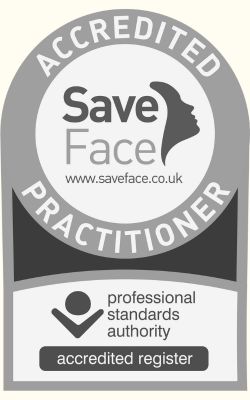What is Microneedling Treatment?
Microneedling, also known as collagen induction therapy, is a non-surgical cosmetic procedure that uses a device with tiny, sterilised needles to create micro-injuries in the surface of the skin. While the idea of puncturing the skin may sound intimidating, these controlled injuries are designed to trigger the body’s natural healing response. As a result, the skin begins to produce more collagen and elastin, two proteins that are essential for firmness, elasticity, and youthful appearance.
This treatment is safe for most skin types and can be performed on the face, neck, décolleté, and even areas of the body that need rejuvenation. Whether you want to soften fine lines, fade scars, or simply boost your overall skin health, microneedling can be a highly effective solution with minimal downtime compared to other treatments like chemical peels or laser resurfacing.
Benefits of Microneedling Treatment
The popularity of microneedling has grown rapidly in recent years, and for good reason. One of its biggest advantages is its versatility. Microneedling is effective in treating multiple skin concerns at once, making it a go-to procedure for people who want noticeable results without invasive surgery.
Patients often choose microneedling to smooth uneven skin texture, reduce the appearance of acne scars, or diminish stretch marks. It can also minimise fine lines and wrinkles by encouraging natural collagen production. In addition, microneedling improves the skin’s ability to absorb topical products, meaning serums and moisturisers penetrate deeper and work more effectively after treatment. Over time, many people notice a brighter, firmer, and more youthful glow.
Who is a Good Candidate for Microneedling?
Microneedling is suitable for most healthy adults who are looking to improve the quality of their skin. It works well for individuals with concerns such as acne scarring, pigmentation issues, fine lines, or early signs of aging. However, it may not be recommended for people with certain skin conditions like eczema, psoriasis, or active infections. Pregnant or breastfeeding women should also consult with a professional before undergoing treatment.
A consultation with a licensed provider is always the best way to determine if microneedling is the right option for your skin needs and goals.
How to Prepare for Your Microneedling Treatment
Preparation plays a crucial role in how your skin responds to microneedling and the results you’ll achieve. Taking the right steps beforehand will help minimise irritation and ensure the treatment works effectively.
In the week leading up to your appointment, it’s important to avoid harsh skincare products that may increase sensitivity. Ingredients like retinoids, glycolic acid, salicylic acid, and other chemical exfoliants should be paused, as they can make the skin more fragile. Similarly, limiting sun exposure is essential—arriving with a sunburn can delay your treatment. Always wear sunscreen and avoid tanning beds or prolonged direct sunlight.
Another important step is to avoid substances that thin the blood, such as alcohol, aspirin, ibuprofen, or certain supplements, unless prescribed by your doctor. Doing so will reduce the chance of bruising. Staying hydrated by drinking plenty of water and moisturising daily will also help your skin heal faster and respond better to the procedure.
On the day of your treatment, arrive with a clean, makeup-free face. This gives your provider a fresh canvas to work with and reduces the risk of irritation or infection.
What to Expect During the Procedure
A typical microneedling session takes about 30 to 60 minutes, depending on the area being treated. Your provider will begin by cleansing your skin and applying a numbing cream to ensure comfort throughout the procedure. Once the skin is prepped, the microneedling device is gently passed across the treatment area, creating microchannels in the skin. Most patients describe the sensation as a light scratching or tingling rather than pain.
Recovery and Aftercare
Microneedling is considered a low-downtime treatment, but it’s normal to experience redness, mild swelling, or sensitivity for the first 24 to 48 hours. Your skin may feel slightly warm or tight, similar to a mild sunburn. Within a few days, you’ll begin to notice a healthy glow as the skin starts to heal and renew itself.
To support recovery, follow the aftercare instructions provided by Dr Saba Raja. Typically, this means avoiding makeup for at least 24 hours, skipping intense workouts for a day or two, and using gentle, hydrating skincare products. Sunscreen is especially important after microneedling, as your skin will be more sensitive to UV exposure.
How Many Sessions Will You Need?
While many people notice improvement after just one session, the best results usually come from a series of treatments. Depending on your skin concerns, providers often recommend three to six sessions spaced four to six weeks apart. For concerns like acne scars or deeper wrinkles, more sessions may be needed.
Final Thoughts
Microneedling is a powerful yet minimally invasive treatment that can deliver noticeable improvements in skin texture, tone, and overall radiance. By preparing properly—avoiding irritants, protecting your skin from the sun, and staying hydrated—you’ll set yourself up for the best possible outcome. With consistent treatments and proper aftercare, microneedling can be a game-changer in your skincare journey.









